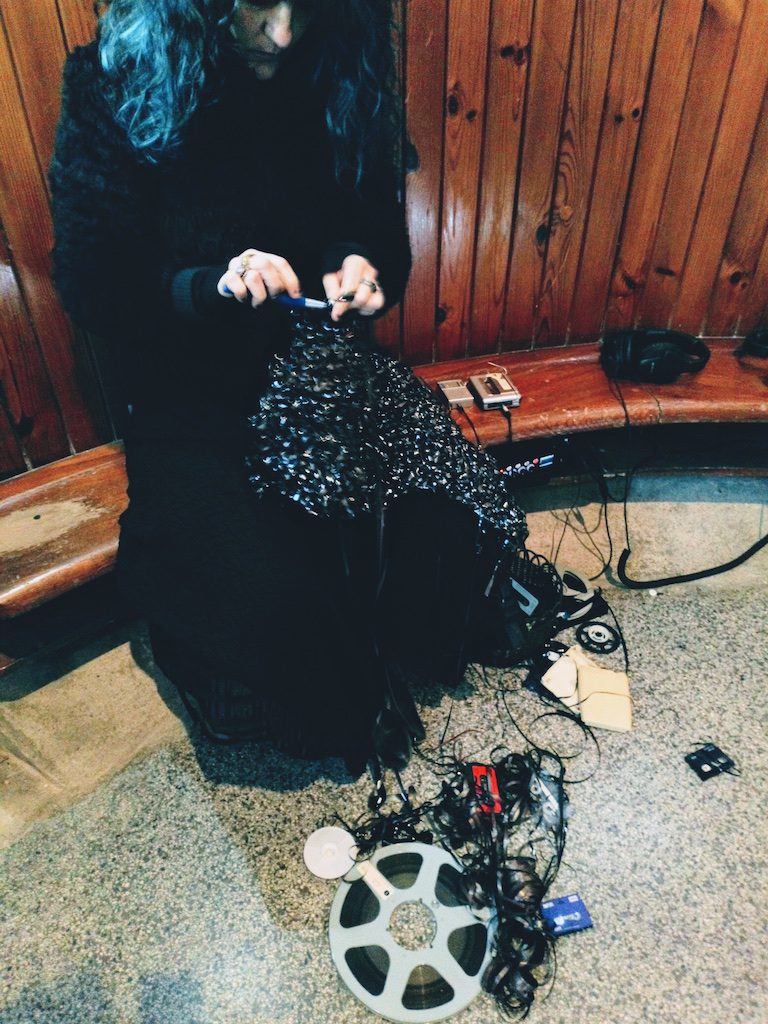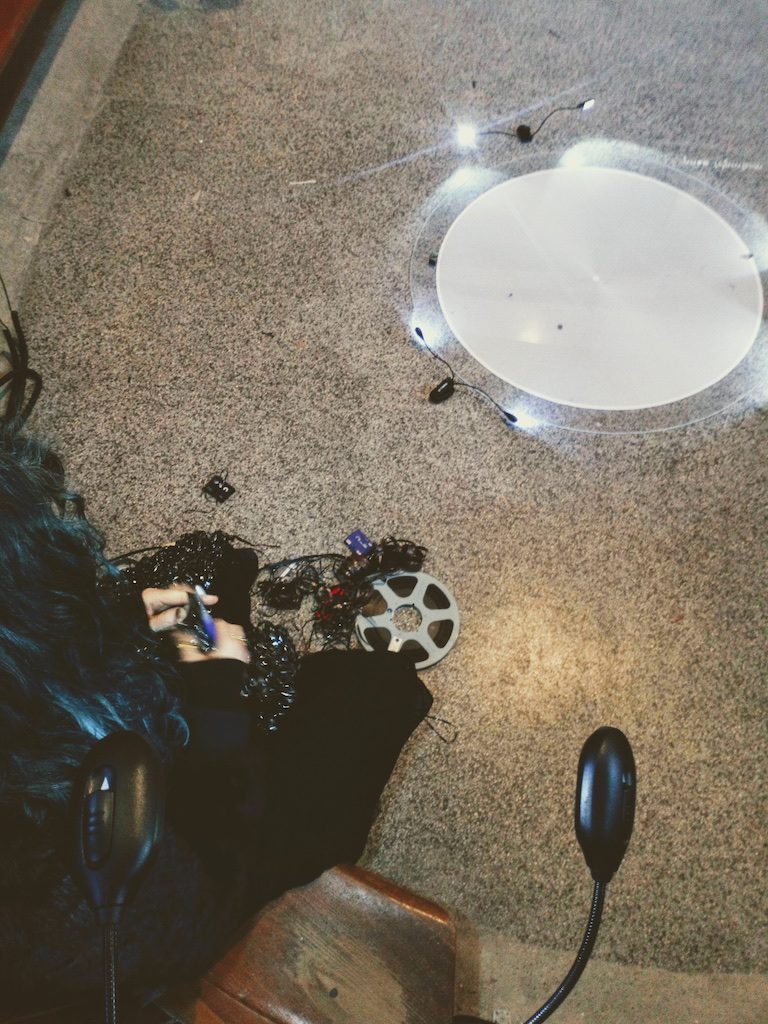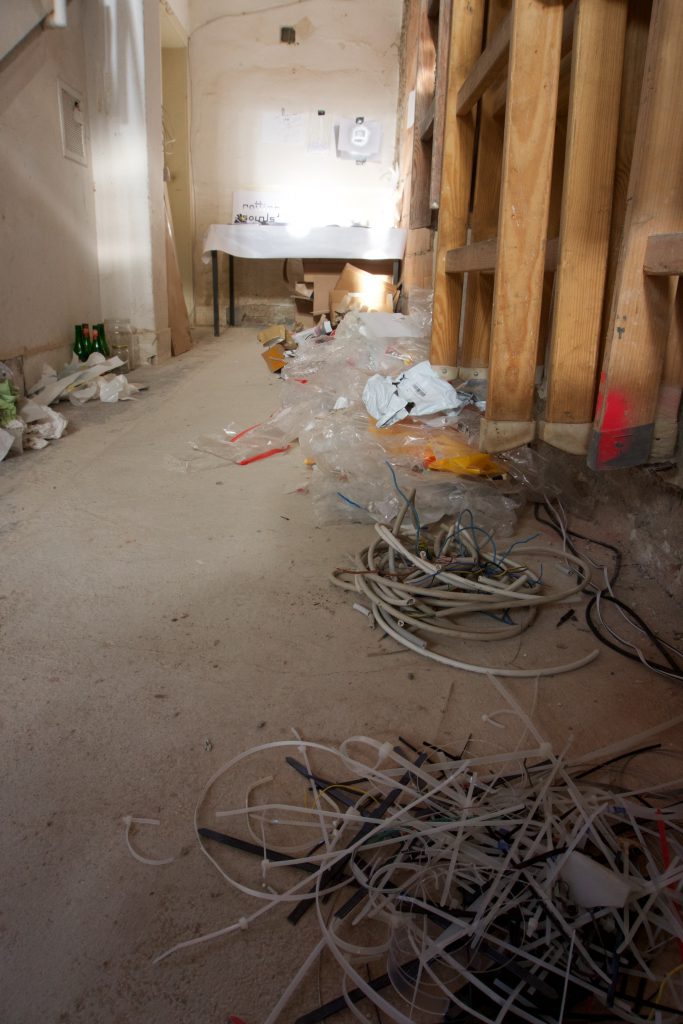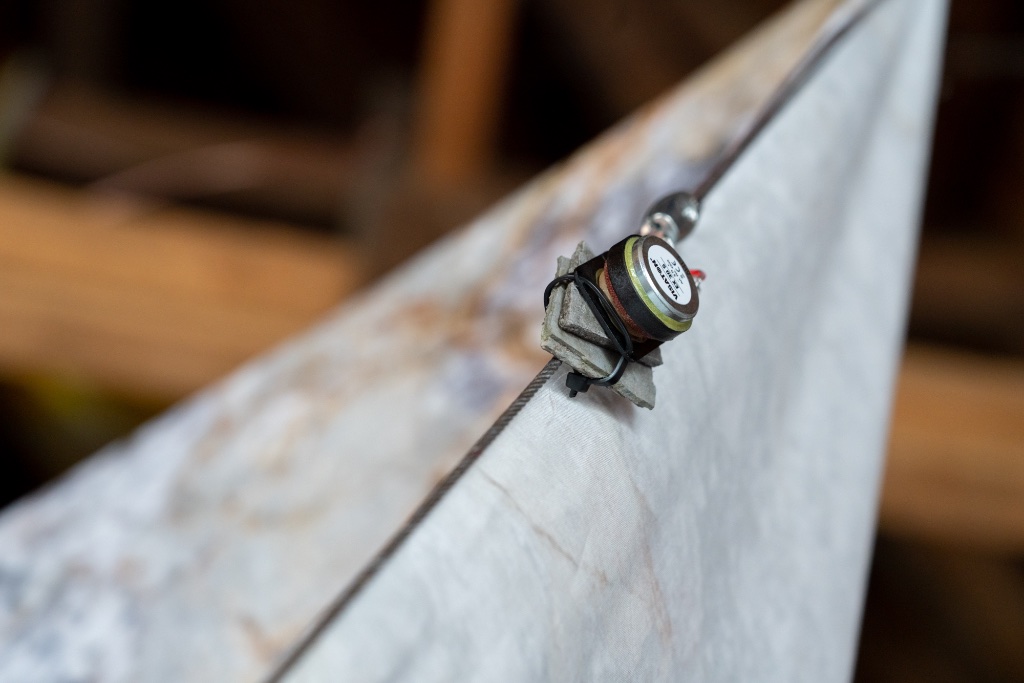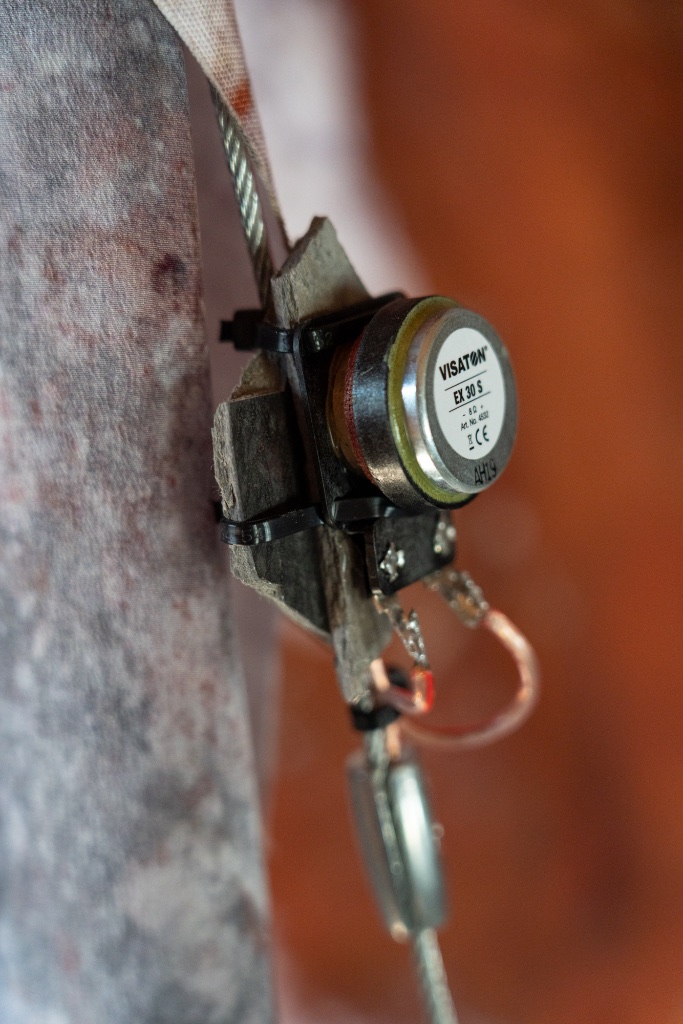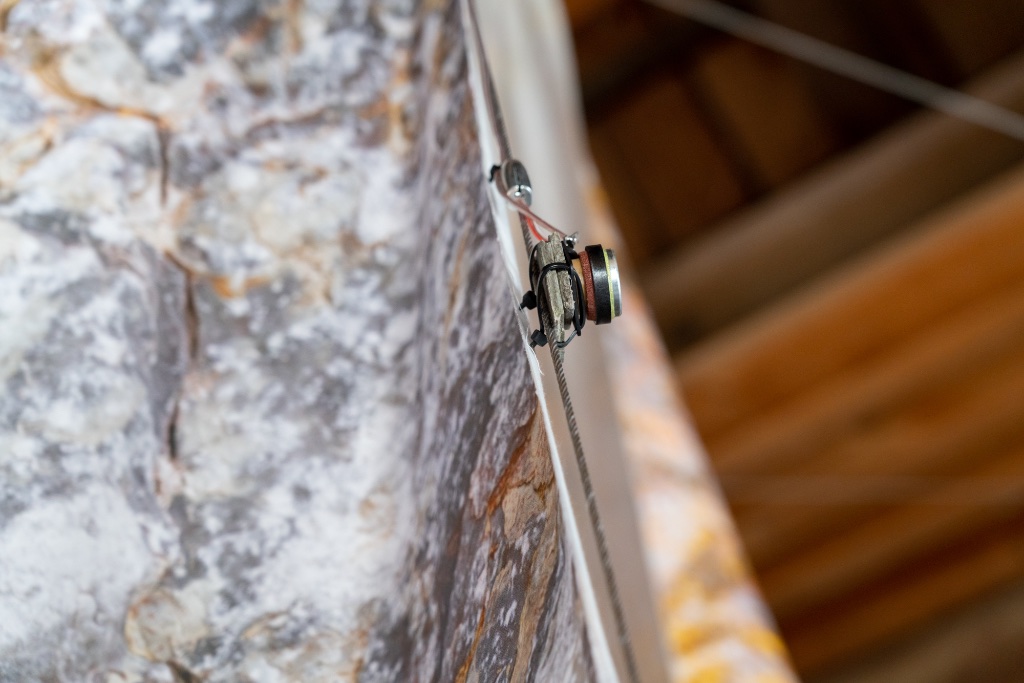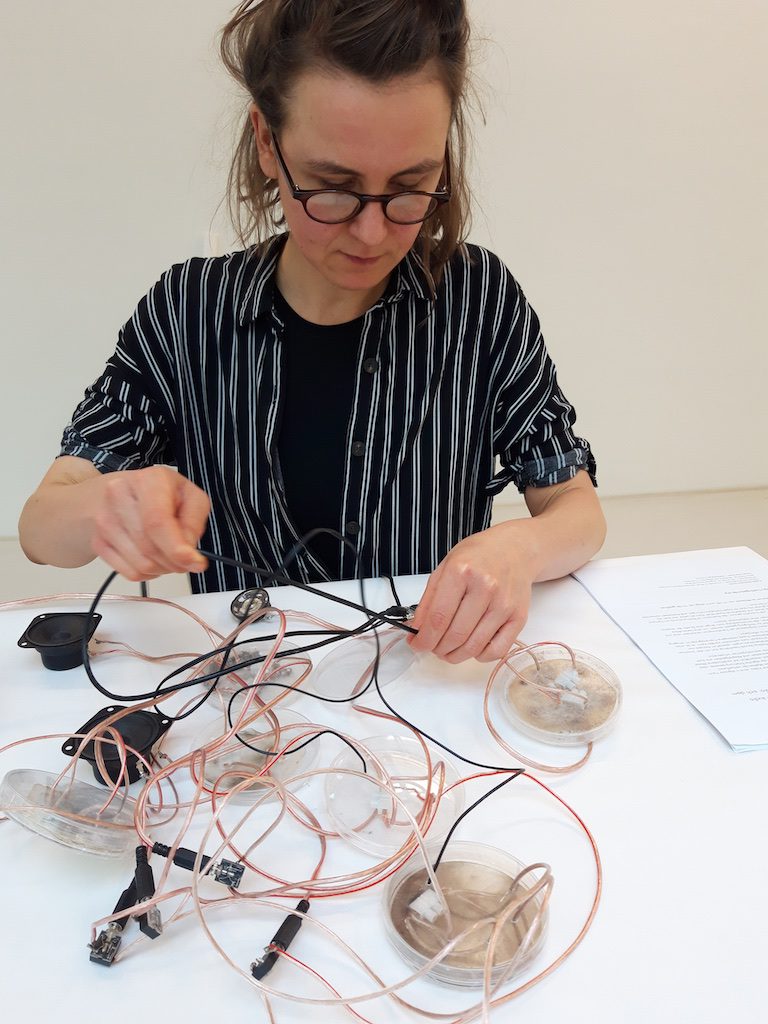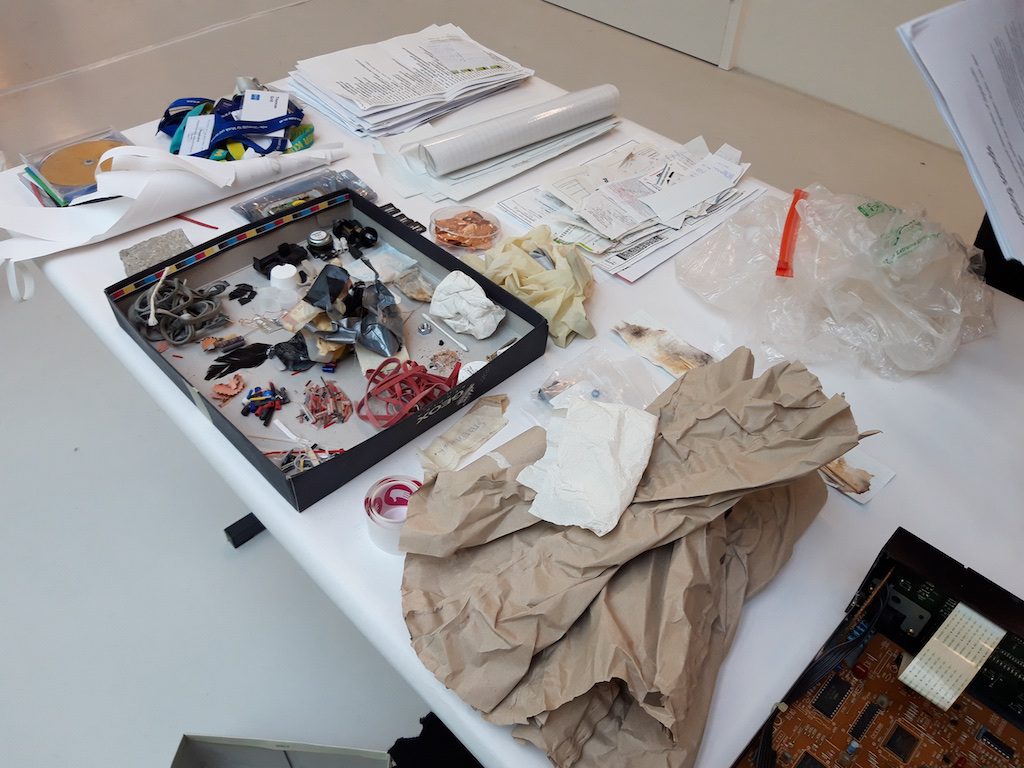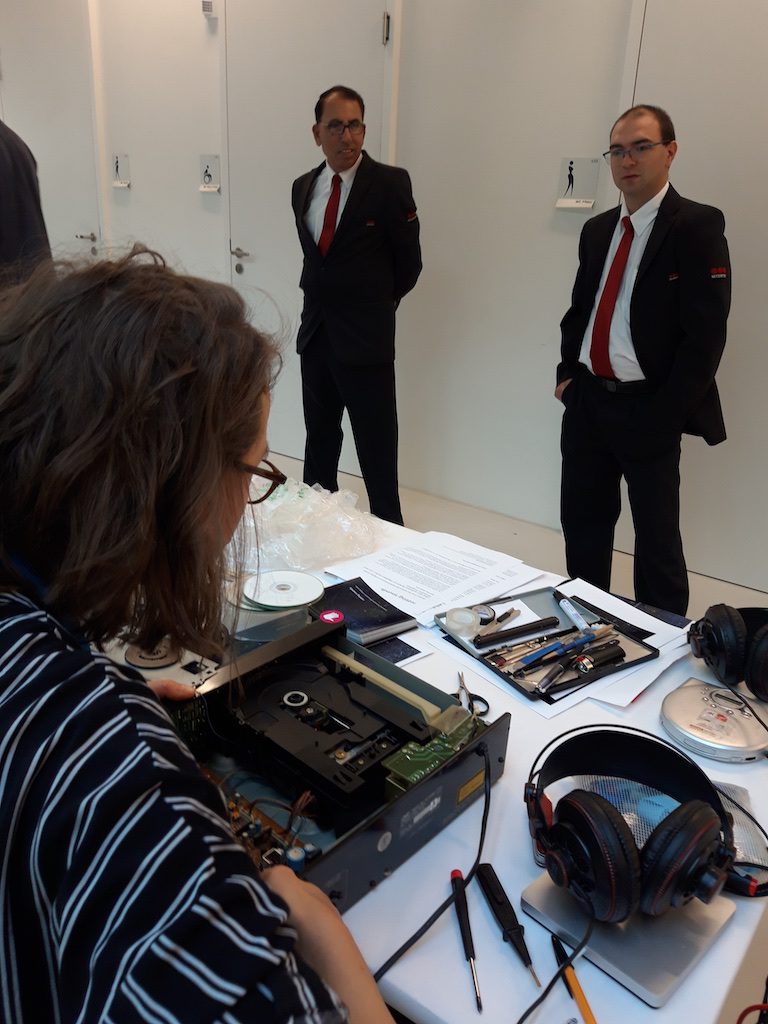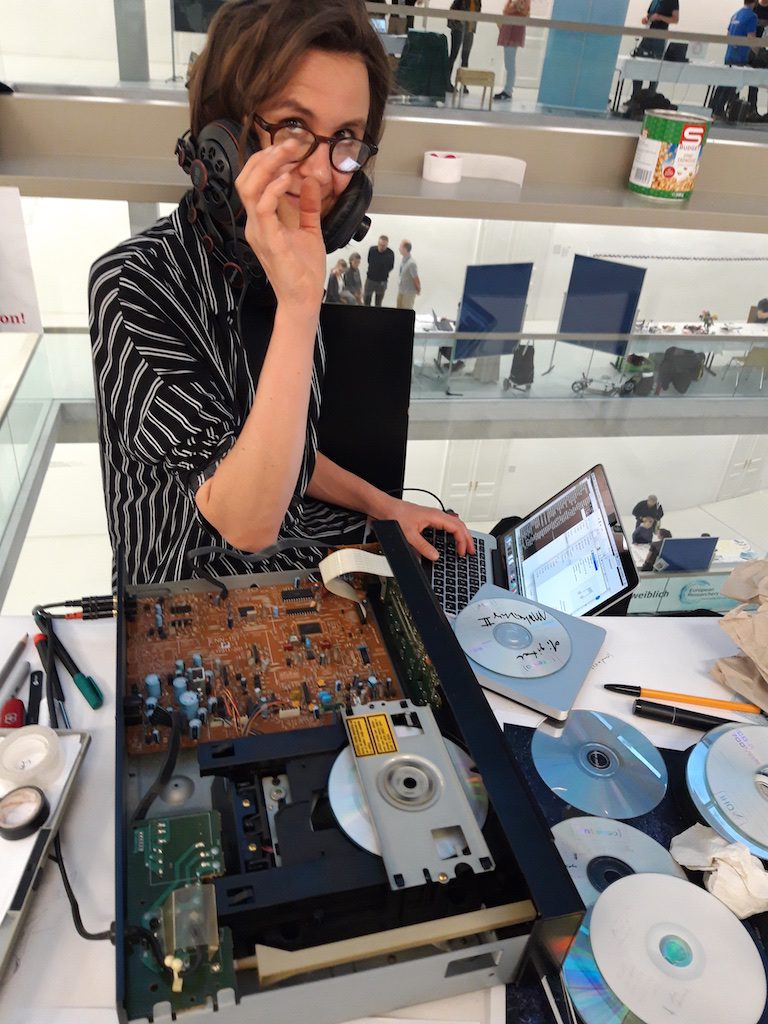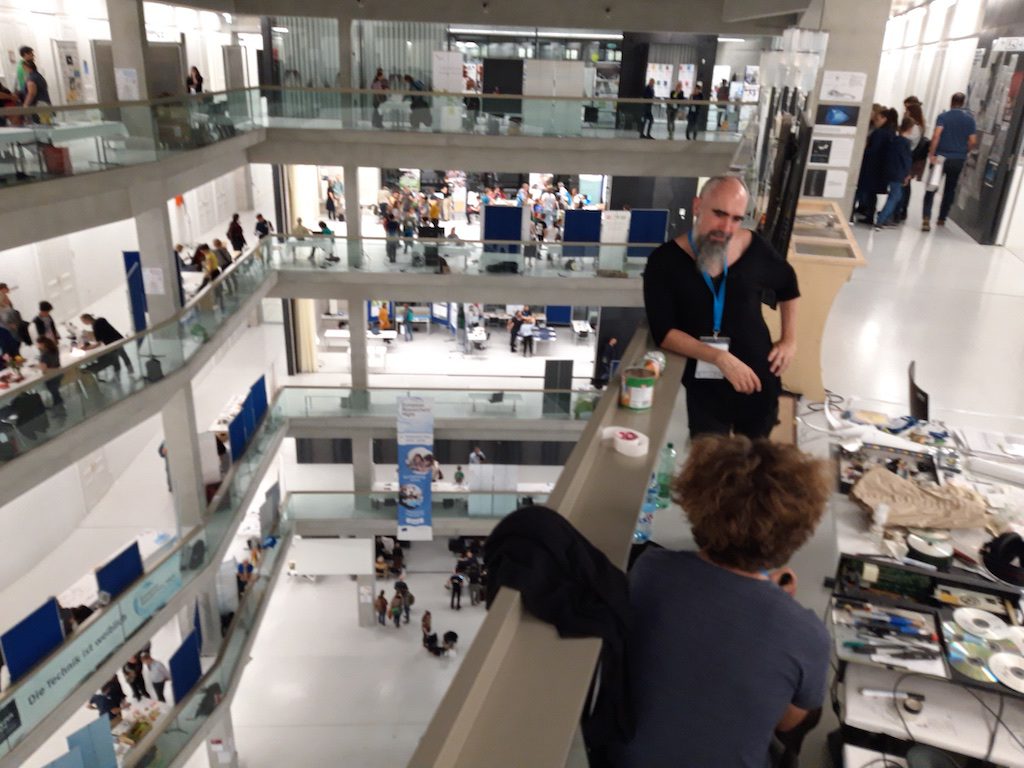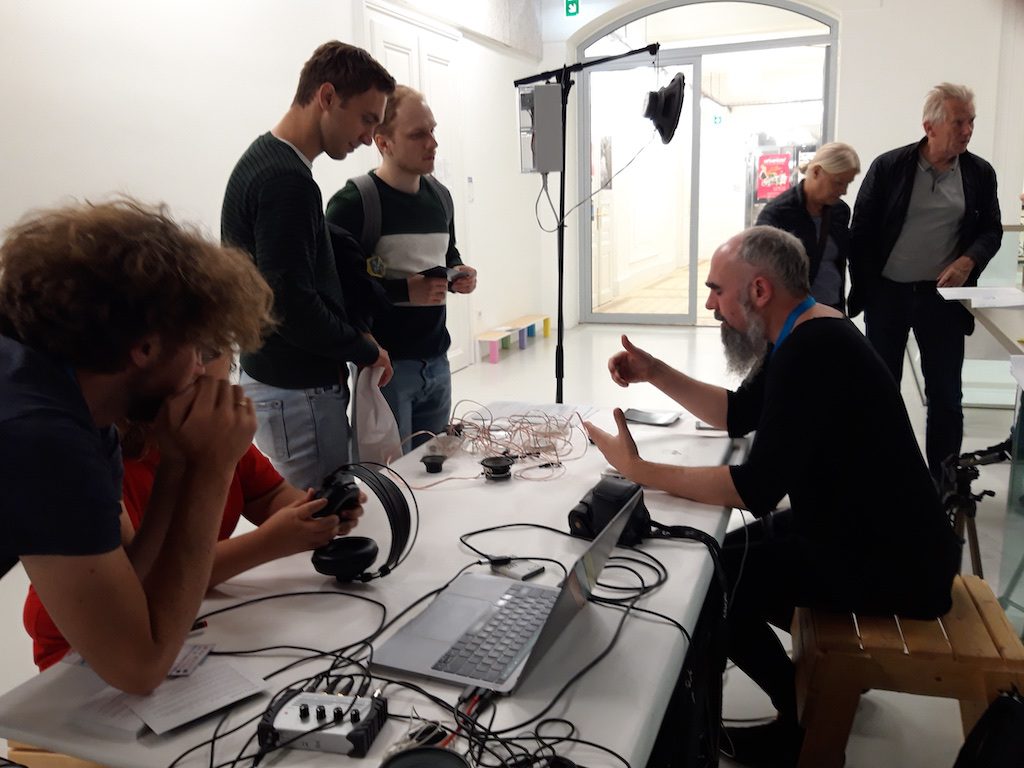Search Results for: fragments
Fragments of Rotting Sounds, book presentation March 27, 2025
Our book Fragments of Rotting Sounds appears in paper at Mark Pezinger Publishing (edition of 20) and also as a digital version (infinite edition) on the Research Catalogue.
The book presentation takes place March 27 2025, 18h at the Bankettsaal of mdw – University of Music and Performing Arts Vienna, Anton-von-Webern-Platz 1, 1030 Wien.
Fragments of Rotting Sounds
This is the final chapter of Rotting Sounds, subject to inevitable erosion. Its paper is an amalgam of research data and material residuals.
Our book Fragments of Rotting Sounds appears in paper at Mark Pezinger Publishing (edition of 20) and also as a digital version (infinite edition) anchored at the Research Catalogue.
With texts by Burkhard Stangl, Thomas Grill, Till Bovermann and Almut Schilling.
Book design and production by Astrid Seme. Printing by Simsa.
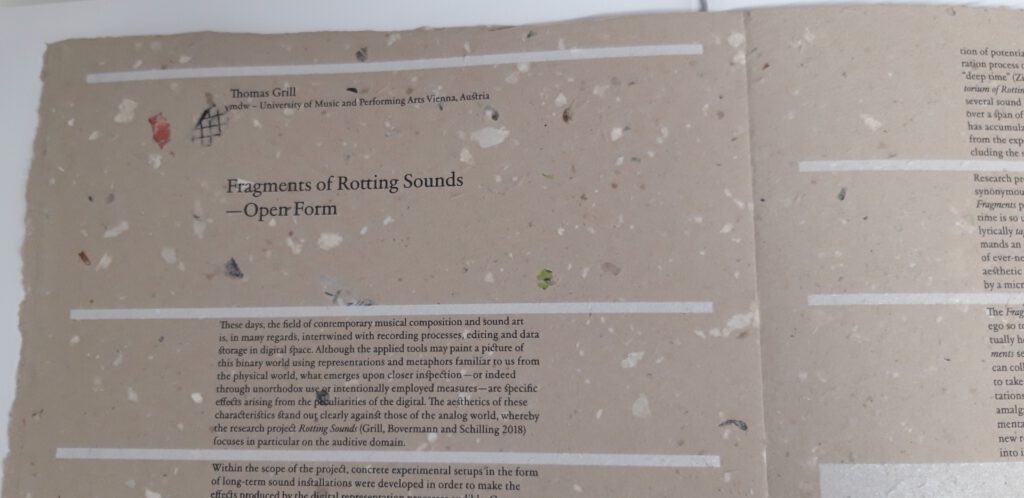
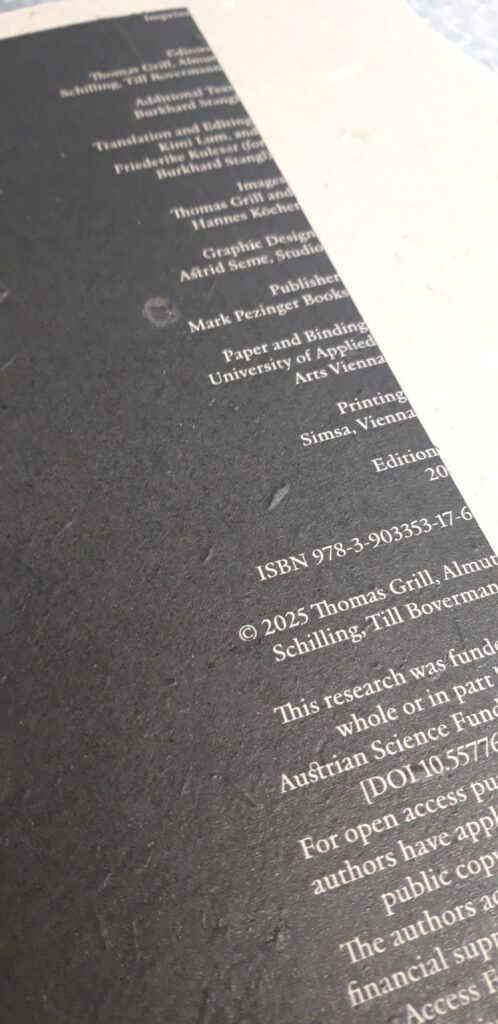
“Fragments” performance evening
Some impressions of the “Fragments” performance evening that took place on October 2, 2019 at the Auditorium for Rotting Sounds, featuring Tobias Leibetseder, Angélica Castelló, Elisabeth Flunger and Thomas Grill.
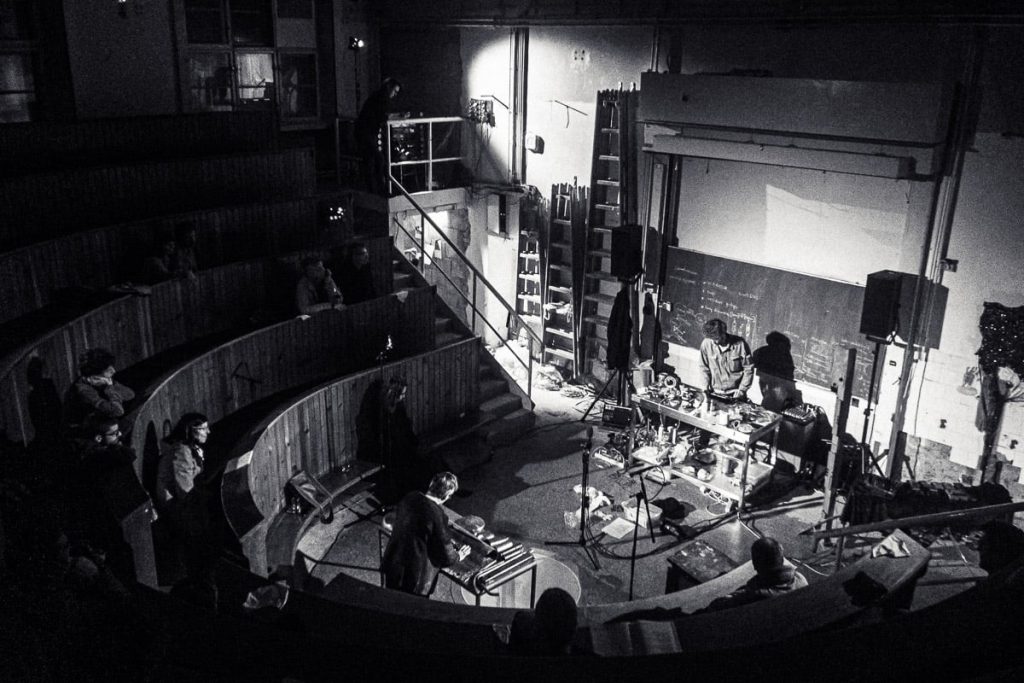
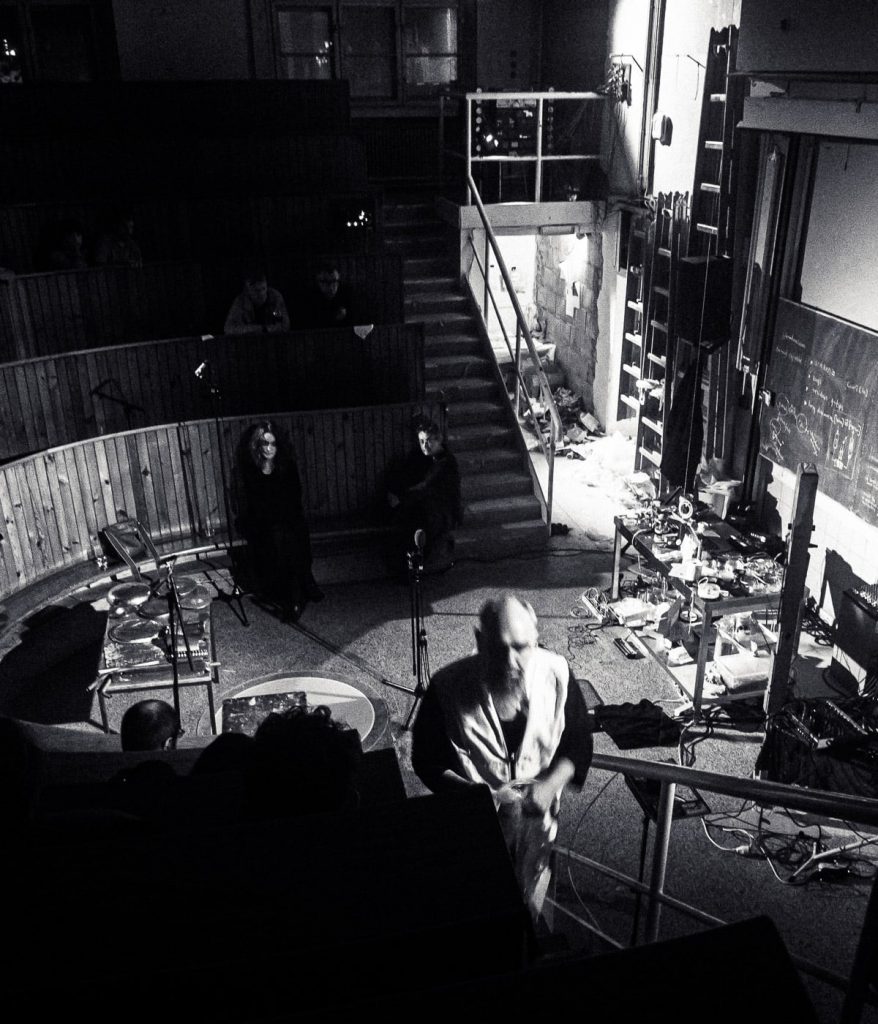
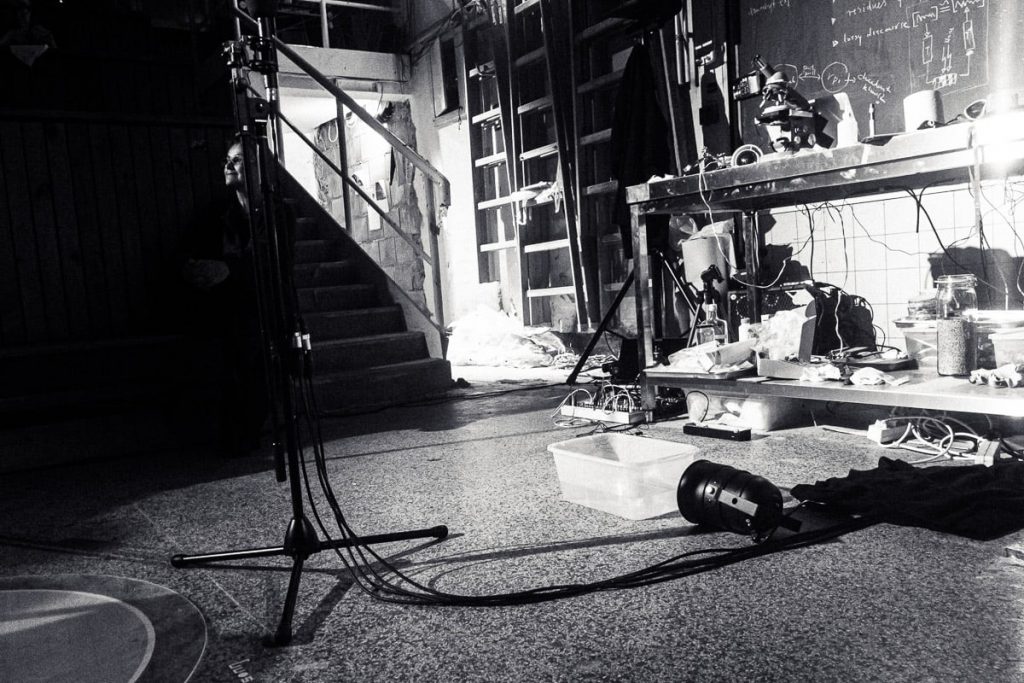
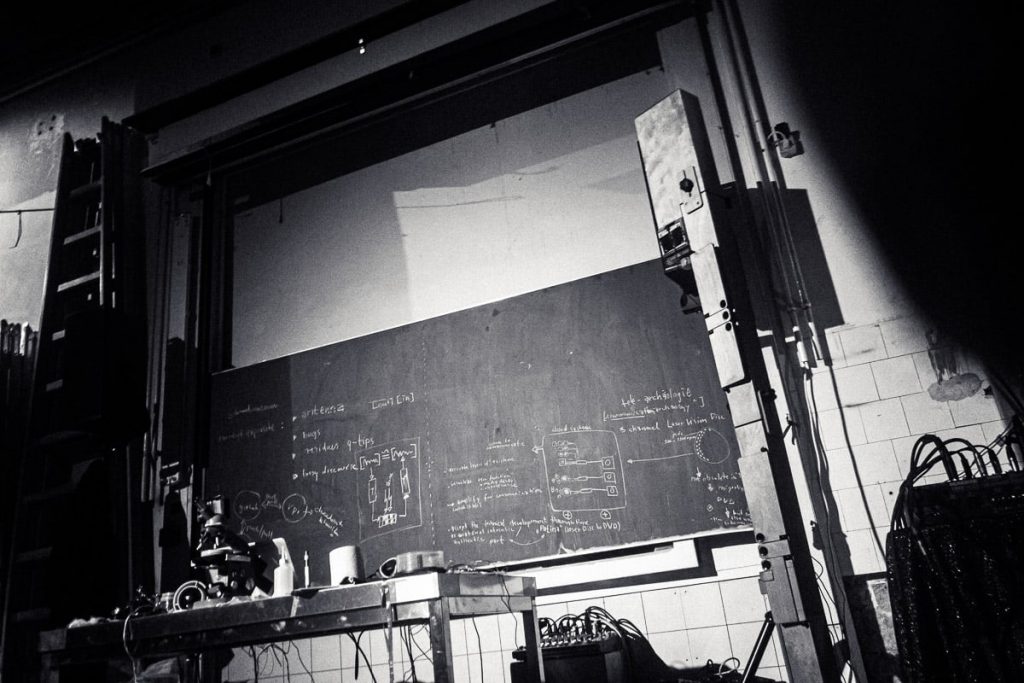
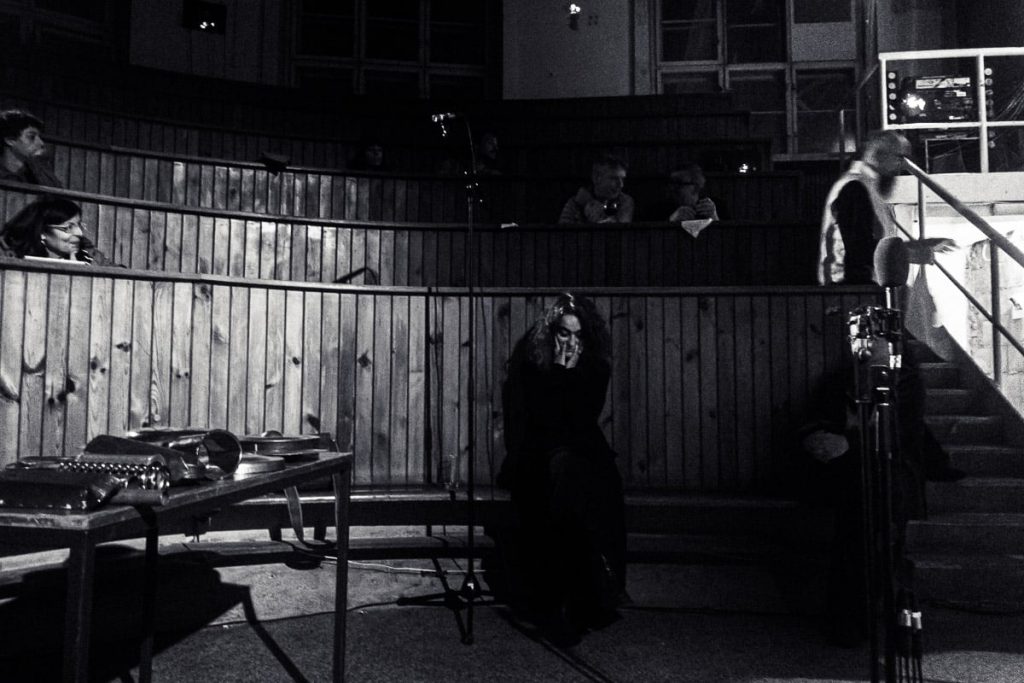
Performances at the Auditorium: “Fragments”, October 2
The performance evening will revolve around Tobias Leibetseder‘s processual and constantly changing sculpture “Fragments“. It is in permanent development and consists of artifacts of the Rotting sounds research process. Waste, things collected, things stored and put aside, texts, pictures, data, sounds etc. are the basis of the shape-changing work. Object or exhibition, museum or archive, collection or documentation are moments of intrinsic research and decomposition, accompanying the process and resting in the distant but immediate eye of the observer.
Tobias Leibetseder‘s performance Transformation 1 is a transformation step and insight into the process of fragments. Artifacts as materials and sounds are transformed into new shapes and synthesized in a performative and concert act.
Angélica Castelló will present a performance based on recordings of her performance “Magnetic litany” from the opening evening of the Auditorium of Rotting sounds on March 29, 2019. It is connected to the permanently exhibited object “Magnetic Room“.
Elisabeth Flunger and Thomas Grill will jointly improvise on material and digital scrap. Everything seemingly valuable today will eventually transform into scraps. We take it as an aesthetic option.
October 2, 2019 19:00
Auditorium of Rotting sounds (Altes Auditorium)
University of Music and Performing Arts Vienna
Anton-von-Webern-Platz 1, 1030 Wien
As the audience will have to be limited, admission is on personal registration only.
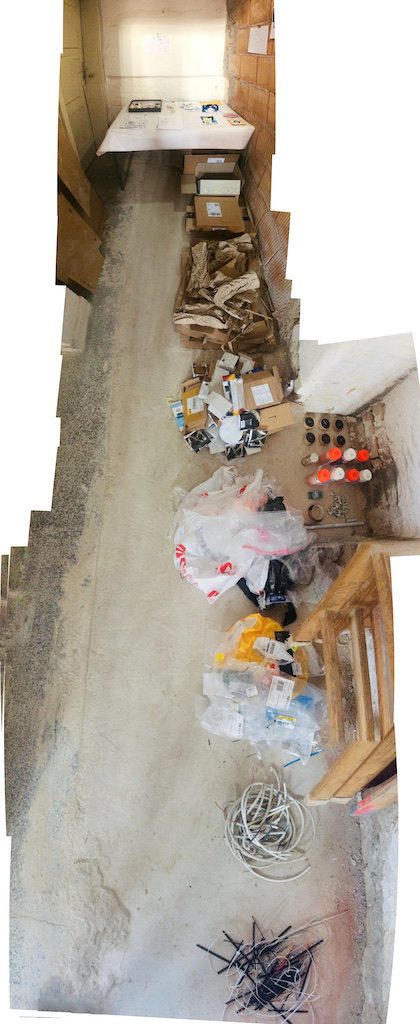
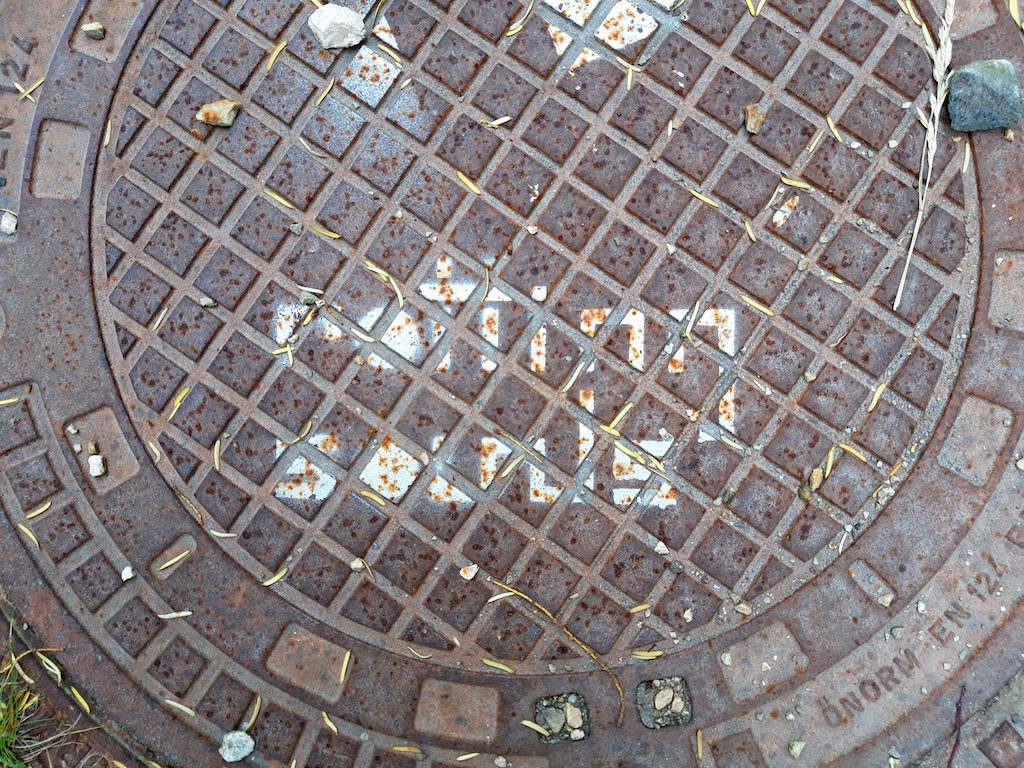
The pieces Magnetic litany 1 and 2 by Angélica Castelló have been made possible by the support of El Sistema Nacional de Creadores de Arte (FONCA).

Fragments
by Tobias Leibetseder, 2019
commissioned by rotting sounds
Cardboard, paper, plastic, metal, waste of any kind, data, sound, video
The processual and constantly changing sculpture “Fragments” is in permanent development and consists of artefacts of the Rottings Sounds process. Waste, things collected, things stored and things put aside, texts, pictures, data, sounds etc. are the basis of the shape-changing work. Object or exhibition, museum or archive, collection or documentation are moments of intrinsic research and decomposition, accompanying the process and resting in the distant but immediate eye of the virtual observer.
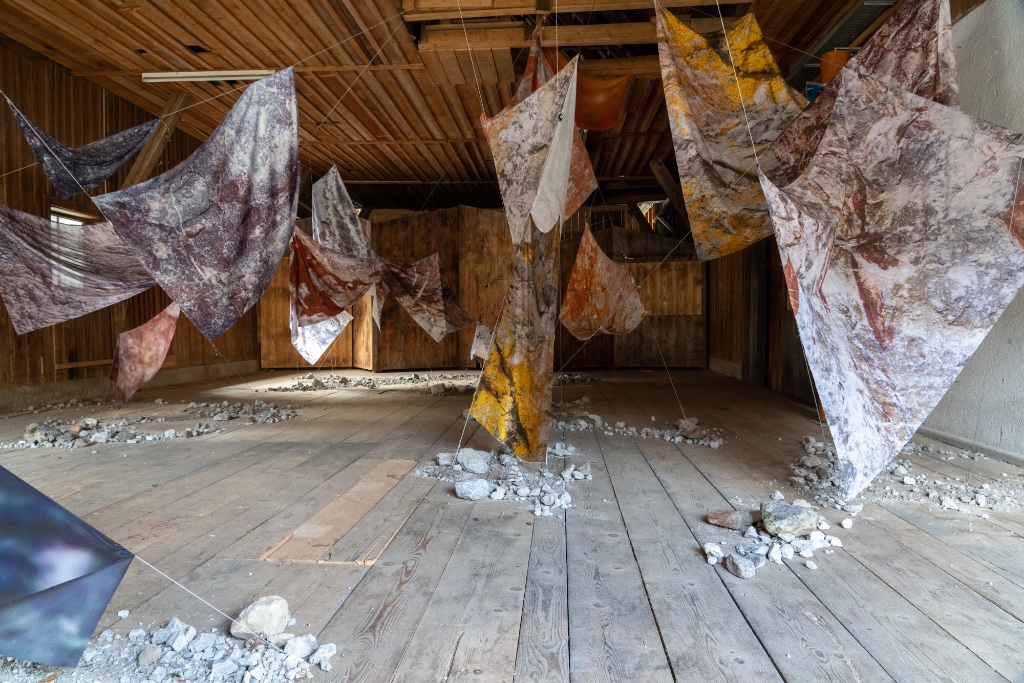
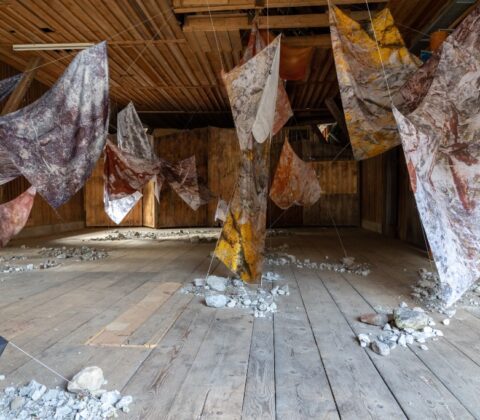
Rieseln @ National Park Gesäuse
Exhibition Alte Säge Gstatterboden 2021
Nicole Krenn, Lisa Truttmann, Thomas Grill
Manchmal, auf dem Weg, trifft es aus der Nähe auf das Ohr, unvermittelt, und mit der Kopfbewegung auf das Auge. Eine helle, leichte Bewegung der kleinsten Bestandteile. An Kanten und Flächen, über Formen und Texturen sammeln sich diese Winzigkeiten zu einer beständigen Strömung.
Sometimes, along the way, the ear is hit up close, suddenly, and then also the eye with a movement of the head. A bright, slight movement of the smallest components. On edges and surfaces, over shapes and textures, these tiny things gather to form a constant flow.
This year’s exhibition in the Alte Säge in Gstatterboden is designed by Thomas Grill, Nicole Krenn and Lisa Truttmann. Under the exhibition title “Rieseln” they deal with the forms of erosion that are omnipresent in the national park in a variety of ways. The artists have examined the temporal process of erosion as well as the visual and acoustic phenomena and elaborated them through the media. The architecture of the Alte Säge in Gstatterboden is directly integrated as the environment for these topics. An installation spans a permeable, walk-in room, flowing from ceiling to floor, in which photography and sound are used on various materials – from fine silk to coarse linen, arranged on steel threads. In terms of content and form, these materials connect the exhibition space itself and the thematic landscape of the national park. Detailed recordings in sound and image serve as a reference and source material. These fragments form contrasts between geometric and soft, rigid and flowing, in sound between naturalistic and synthetic – the installation becomes a tangible, lively landscape.
The auditory component consists of 3 vertically stacked layers: From the semi-open attic of the hall, a synthetically generated wind flow can be perceived, swelling and calming with the intensity of the sun’s irradition. Below the wooden floor, a subtle water trickle reminds of the presence of small streams all over the national park. In between those two layers, the space is traversed by an airy arrangement of steel wires, supporting the large textile surfaces and also bearing a total of 12 sound emitters. These are acoustic transducers mounted on small pieces of slate, producing ever changing patterns of tiny clicks, flowing from far overhead to below the floor. Occuring only once in a while, on a very subtle loudness level, the trickling movements provide moments of irritation within the exhibitions’s overall flow of textures and sounds.
Opening times:
May 01–15: Fri–Sun, 10–18h
May 19 through October 31: Tue–Sun (Mon closed), 10-18h
Free admission
Alte Säge Gstatterboden
gegenüber Nationalpark Pavillon
Gstatterboden 25
8913 Gstatterboden
+43 664 8252313
Materialities symposium, Sussex University, Brighton, December 4+5
Thomas Grill and Till Bovermann will represent activities of the Rotting Sounds project within a fast-paced symposium on the subject of materialities in music making.
Duo Performance @ the Rosehill Arts: December 4, 9pm
Thomas Grill – Musical material
Probing of fragments of deceased instruments by use of digital sound. Sounding the materials, shapes, resonances – tracing remnants of a musical life.
Till Bovermann – Buffer manipulations
Probing and fragmentation of deceased digital sound. Sounding the materials, shapes, resonances – tracing remnants of a brief ephemerality.
Masterclass and Round table/panel discussion: December 5, 10-13h
Notions of materiality and influence on practice
Topics relating to notions of materiality and influence on practice are discussed by a panel of academics/composers and performers. This promises to be a lively debate relating to media archeology, liveness and audience perspective.
Participants include Evelyn Ficarra, Tom Richards, Till Bovermann, Thomas Grill and others.
European Researchers’ Night, September 27
We took part in this year’s European Researchers’ Night, showcasing a broad range of research projects at the University of Applied Arts Vienna.
From our ongoing research, we presented a couple of exemplary positions, such as Tobias Leibetseder’s “Fragments“, Almut Schilling’s and Till Bovermann’s “CD-R(ot)“, a part of Almut’s “The Carrier” installation, Till’s take on “Data Forensics”, as well as Thomas Grill’s “Mutual understanding” and “Reference Tone“.
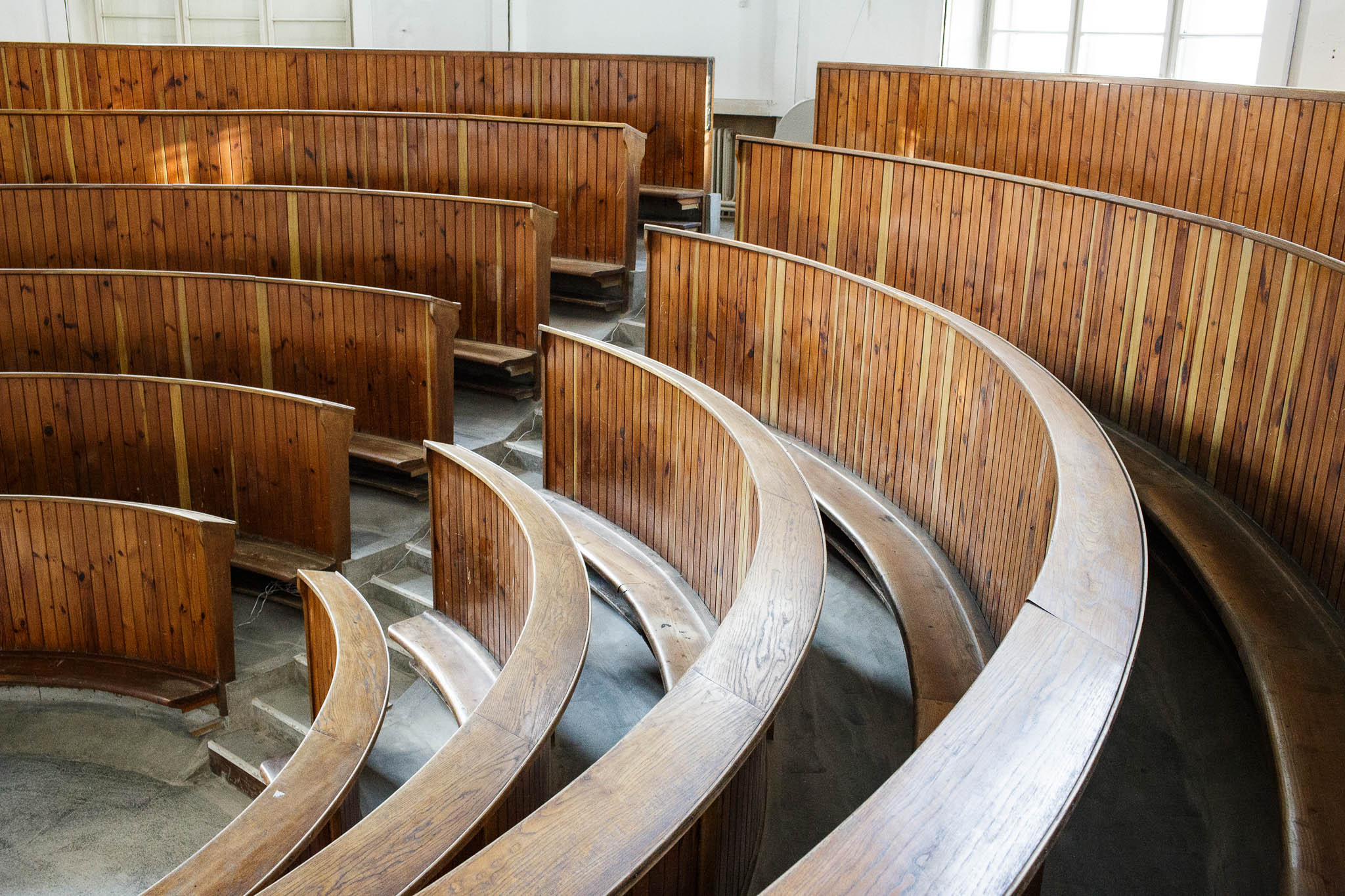
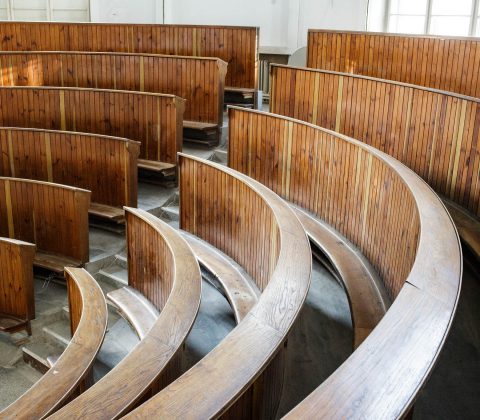
Opening of the Auditorium of rotting sounds, March 29, 6pm
Program:
Reinhold Friedl: Die Suche nach dem Original: vom Verfall elektroakustischer Musik – lecture
Klaus Filip: Sonic Dust – opto-acoustic performance
Till Bovermann: Buffer manipulations – live coding performance
Mario de Vega: Suspension – for quadraphonic system, tape, objects and self-made electronics
at the Bankettsaal of the University of Music and Performing Arts Vienna
Anton-von-Webern-Platz 1, 1030 Wien, Austria
The Auditorium is open after 7pm with the following works on display:
Angélica Castelló: Magnetic Room – objects and sound installation
Klaus Filip: Dust a bit – opto-acoustic installation
Juliana Herrero and Thomas Grill: Antenna – sounding object
Martin Howse: Enrichment and depletion – installation
Nicole Krenn and Thomas Grill: Fields of Haze – audiovisual installation
Tobias Leibetseder: Fragments – installation
Mario de Vega: Intermission – sounding object
Till Bovermann and Almut Schilling: CD-R(ot) – sound installation
… and other works and experimental setups of the project team Thomas Grill, Till Bovermann and Almut Schilling.
Live events in the Auditorium during the opening:
Angélica Castelló: Magnetic litany – Performance
Charlotta Ruth: Intervention
Dario Sanfilippo: Phase transitions – Multi-channel electroacoustic performance
For a visit of the auditorium at the opening a personal registration is absolutely recommended!
Workshop with Martin Howse and Till Bovermann on circulation/corruption:
28.3., 10:00 to 17:30 and 29.3., 09:30 to 13:00
at the Senatssitzungsraum (AW L0123) and the whole campus.
The rotting sounds project is a cooperation between the University of Music and Performing Arts Vienna, the University of Applied Arts Vienna and the Academy of Fine Arts Vienna, funded by the Austrian Science Fund (FWF).
Auditorium of rotting sounds
Our research project is physically located at the main campus of the University of Music and Performing Arts Vienna, in the only unrestored building which used to be an auditorium of the former School for Veterinary Medicine.
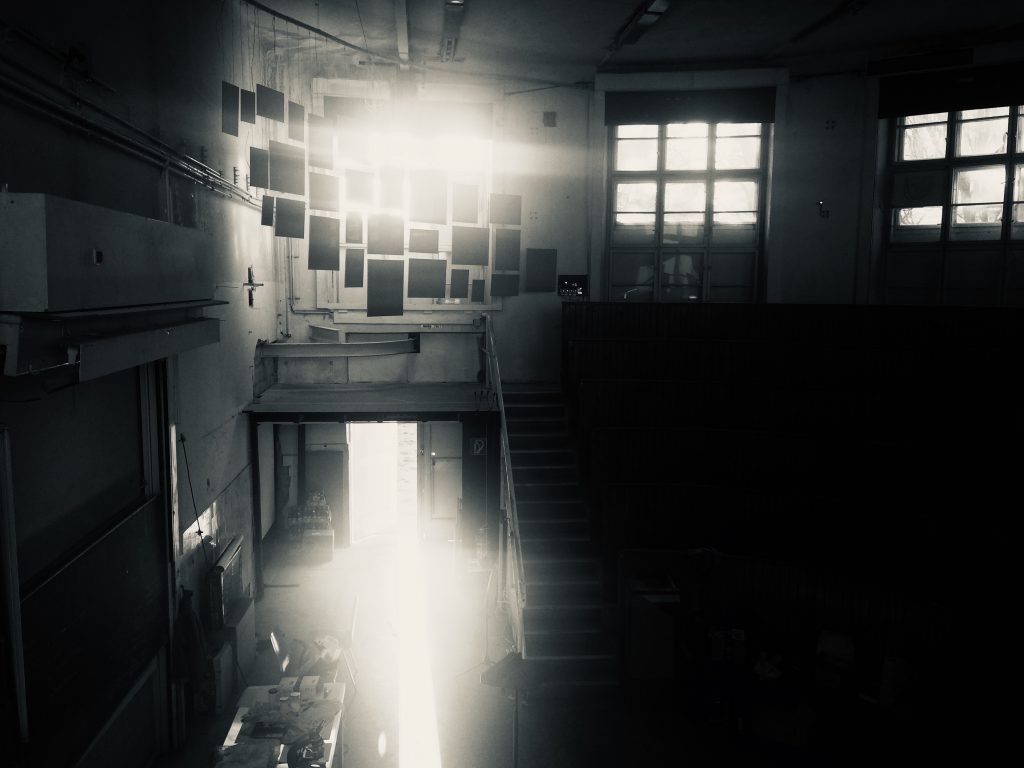
Address: Altes Auditorium, Anton von Webern Platz 1, 1030 Wien.
The building is the northern half-round element on the back side of building S on the campus.
We run our own project-related experiments with sound and media in this room, but it is also a publicly accessible listening space. We integrate external artistic positions which are related to our research agenda, that is, working with digital sound and time-dependency.
Conceptually, we refer to the legendary Mold museum (Schimmelmuseum) by artist Dieter Roth. Roth is well-known for his works with (bio-)degradable art and established his Schimmelmuseum in 1992 both as a workplace and a museum for the produced works.
Currently, the following works are on display:
- Juliana Herrero and Thomas Grill: Antenna – sound installation
- Almut Schilling: The Carrier – experimental system
- Till Bovermann and Almut Schilling: CD-R(ot) – sound installation
- Klaus Filip: Dust a bit – opto-acoustic installation
- Martin Howse: Enrichment and depletion – installation
- Nicole Krenn and Thomas Grill: Fields of Haze – audiovisual installation
- Hannes Köcher and Thomas Grill: Inscriptions from the Archive – processual installation
- Mario de Vega: Intermission – sounding object
- Tobias Leibetseder: Fragments – installation
- Angélica Castelló: Magnetic Room – objects and sound installation
- Thomas Grill: Midnight song – sound object
- Dario Sanfilippo: Phase transitions – sound installation
Currently exhibited at ESC Medienkunstlabor in Graz, Austria:
- Thomas Grill: Mutual understanding – sound installation
Details about the space, the works and the artists can be found in our exhibition catalog.
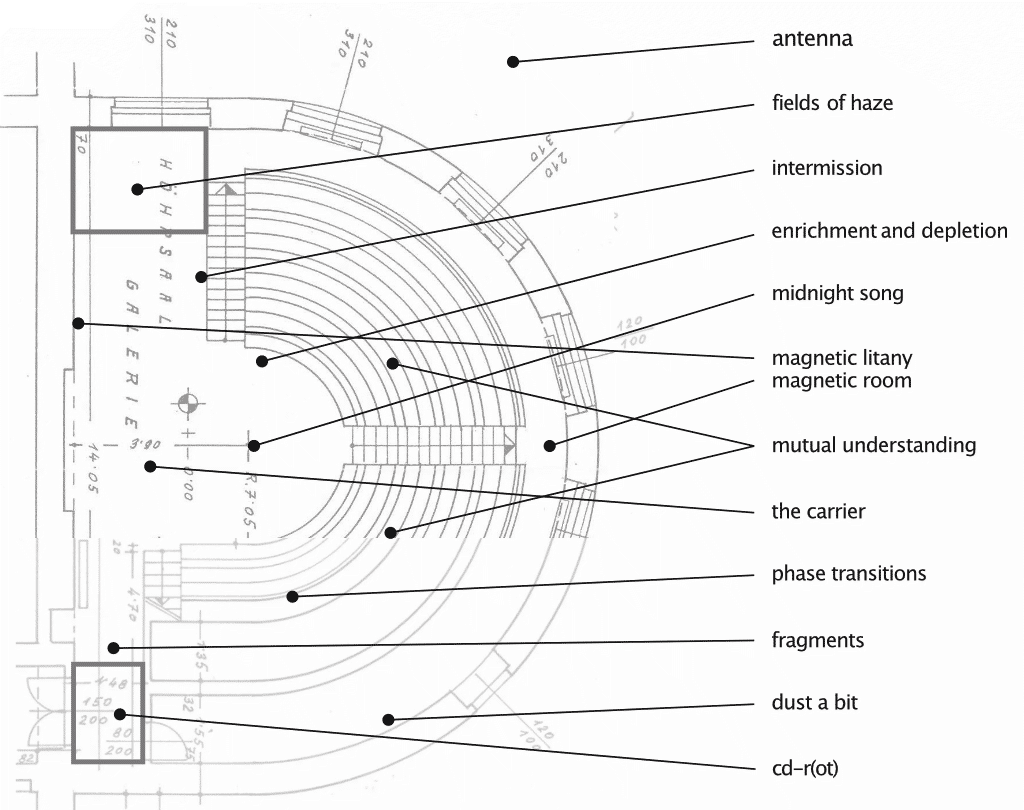
Due to the COVID-19 restrictions, the Auditorium can currently one be visited upon individual appointment.
